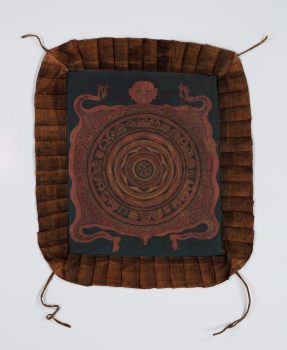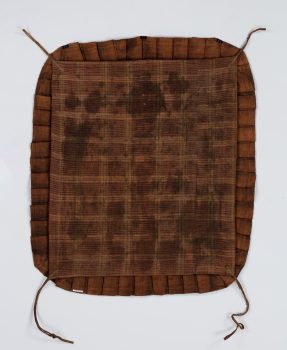Tibet
18th–19th century


Tibet
18th–19th century


This painting, designed to hang from the ceiling, is a large yantra specifically used in rituals for protection of person, family, or community. The backdrop of flayed human skin indicates that the type of protection being summoned is extremely fierce. The heart of the yantra is composed of two red interlocked triangles with inscriptions. In some contexts, for purposes of protection, a person’s name is written at the center of the yantra.
A kind of energy that can be used, individually and collectively, to effect change.
While the primary religious goal for followers of Buddhism is enlightenment, many of the practices also serve secular goals related to daily life, including ethical conduct and cultivating well-being.
Prescribed practices that carry symbolic meaning and value within a specific tradition and are intended to attain a desired outcome. Rituals are usually done as part of a ceremony or regular routine.
Today, Tibetans primarily inhabit the Tibetan Plateau, situated between the Himalayan mountain range and the Indian subcontinent to the west, Chinese cultural regions to the east, and Mongolian cultural regions to the northeast. During the 7th to 9th century, Tibetan rulers expanded their empire across Central Asia, and established Buddhism as the state religion.
Get the latest news and stories from the Rubin, plus occasional information on how to support our work.